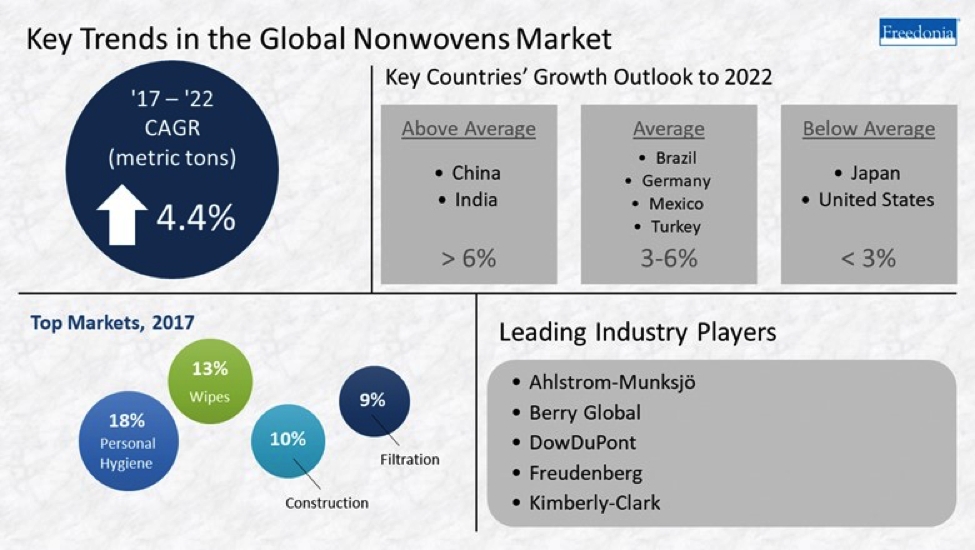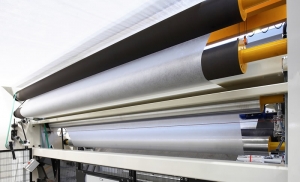01.22.19
Nonwovens demand in China is expected to increase 6.9% per year to 4.9 million metric tons in 2022. While economic growth has begun to slow to more sustainable levels, it will remain rapid through 2022 and will fuel significant gains in nonwovens demand as the country’s consumer base expands. China has a large export market for goods that contain nonwovens, so healthy growth in nearby markets (e.g., India, Indonesia, Malaysia, Philippines, Vietnam) will also support gains in Chinese nonwovens demand. These and other trends are presented in Global Nonwovens, a new study from The Freedonia Group, a Cleveland-based industry research firm.
 Nonwovens demand in China totaled 3.5 million metric tons in 2017, making it the largest national market in the world. China achieved its leading position over the course of the last decade as part of a broader trend of extremely rapid expansion throughout the country’s economy:
Nonwovens demand in China totaled 3.5 million metric tons in 2017, making it the largest national market in the world. China achieved its leading position over the course of the last decade as part of a broader trend of extremely rapid expansion throughout the country’s economy:
• Since the beginning of its economic reform in 1978, China’s per capita GDP has seen rapid increases for four decades.
• GDP growth brought substantial reduction in poverty levels and transformed China into a global manufacturing leader, including in the production of goods containing nonwoven materials.
• The Chinese nonwovens market was slightly smaller than the U.S. market in 2007 but by 2017 was well over twice as large.
Global demand for nonwovens is expected to increase 4.4% per year to 12.2 million metric tons in 2022. The main driver of growth is the continued adoption of nonwovens in place of materials such as specialty papers and woven or knitted textiles – particularly in developing parts of the world, especially in the Asia/Pacific region. Nonwovens compete in a wide variety of applications due to their versatility – with many different fibers and configurations producing wide-ranging performance characteristics.

• Since the beginning of its economic reform in 1978, China’s per capita GDP has seen rapid increases for four decades.
• GDP growth brought substantial reduction in poverty levels and transformed China into a global manufacturing leader, including in the production of goods containing nonwoven materials.
• The Chinese nonwovens market was slightly smaller than the U.S. market in 2007 but by 2017 was well over twice as large.
Global demand for nonwovens is expected to increase 4.4% per year to 12.2 million metric tons in 2022. The main driver of growth is the continued adoption of nonwovens in place of materials such as specialty papers and woven or knitted textiles – particularly in developing parts of the world, especially in the Asia/Pacific region. Nonwovens compete in a wide variety of applications due to their versatility – with many different fibers and configurations producing wide-ranging performance characteristics.



















